Skiblades are shaking things up for beginner skiers, offering a simple, fun, and less intimidating way to learn. Shorter than regular skis (26–47 inches vs. 59–79 inches), they’re lightweight, easy to control, and don’t require poles. This makes them perfect for anyone new to skiing who wants to skip the frustration and start enjoying the slopes right away.
Here’s why they’re a great option:
- Easier to Handle: Their compact size makes turning and balancing simpler.
- Faster Learning Curve: Most beginners feel confident within hours, not weeks.
- Portable: They fit in a backpack - no roof racks or oversized bags needed.
- Affordable: Starting at $635, they’re cheaper than most full ski setups.
- No Special Boots: Use your regular winter boots, snowboard boots, or ski boots.
Snowfeet skiblades are a standout choice, offering options for all skill levels and terrain. If you’re looking for a hassle-free way to start skiing, skiblades might just be your new best friend. :)
Snowboarder tries Snowfeet* | Which Snowfeet* Short Ski is the Best? | Snowblades 44, 65, 99 Review
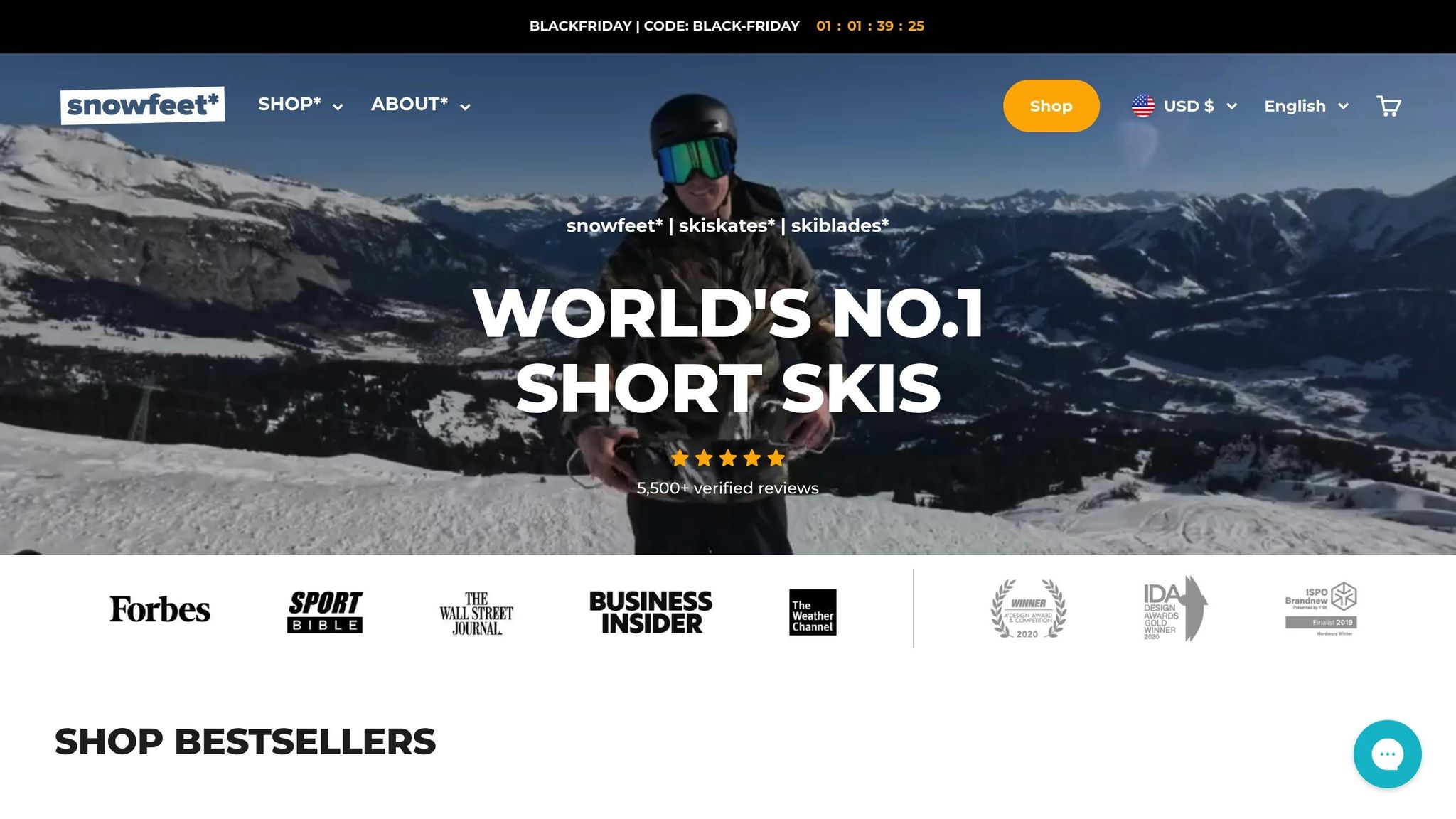
The Problem: Common Challenges for New Skiers
Learning to ski should be fun and exhilarating, but for many beginners, it quickly turns into a frustrating experience. The gear, instead of being helpful, often feels like a burden - heavy, awkward, and difficult to manage. Add in the complexity of learning proper techniques, and it's no surprise that many first-timers struggle to enjoy their time on the slopes. Let’s break down why traditional skis can make things harder than they need to be.
Long Skis Are Tough to Manage
One of the first hurdles beginners face is the sheer size and weight of traditional skis. Standard skis typically range from 59 to over 79 inches in length, making them awkward to handle, especially for someone new to the sport. Instead of feeling like tools that help you glide down the mountain, they can feel more like clunky planks that get in the way.
Rick Paris, Technical Director at The Short Ski Shop, sums it up perfectly:
"Traditional skis can feel large and cumbersome, making it easy to cross tips and fall. This is why long skis make learning more difficult." – Rick Paris, Technical Director, The Short Ski Shop
The Learning Curve Is Steep
Another challenge with traditional skis is how much precision and technique they demand. For a beginner, mastering the movements required for turning and stopping can take weeks. Instead of building confidence, many newcomers find themselves overwhelmed by the fear of falling. Long skis also require strong legs and excellent balance - skills that take time to develop - leading to quicker fatigue and more frequent spills.
As Rick Paris puts it:
"Long skis require a steep learning curve. They don't feel natural at first and need weeks of practice to master."
On the other hand, skiblades offer a simpler and more intuitive learning experience, helping beginners focus on enjoying the ride rather than worrying about technique.
Transporting Gear Is a Hassle
Even before you hit the slopes, traditional skis present another problem: they’re a pain to transport. Their length - often between 59 and 79 inches - makes them difficult to fit into most cars, turning a trip to the mountains into a logistical headache. Suddenly, skiing feels less like a fun adventure and more like a chore.
To make matters worse, bulky skis require additional accessories like roof racks or oversized bags. Traveling by plane? Get ready for extra fees and handling hassles. For many beginners, just getting their gear to the slopes can feel exhausting.
This is where skiblades shine. Their compact size makes them much easier to transport, whether you’re packing them in your car or checking them at the airport. It’s one less thing to worry about, so you can focus on having fun.
The Solution: Why Skiblades Work Better for Beginners
Traditional skis can feel like a steep hill to climb - literally and figuratively - when you're starting out. But skiblades flip the script, making the learning process smoother and way more enjoyable. These compact skis, which range from 26 to 47 inches (65 cm to 120 cm) in length, offer a beginner-friendly alternative that’s easy to pick up from day one.
The Snowfeet team sums it up perfectly:
"Skiblades are designed for quick, sharp movements, making them a fantastic option for beginners, as they provide an easier learning curve compared to longer skis."
Better Control and Balance
The biggest win with skiblades? How much easier they are to control. At just half the length of traditional skis, they’re a game-changer for balance and stability. That shorter length creates a lower center of gravity, which makes staying upright and steady on the slopes feel much more natural.
Think of it like this: skiblades are to skiing what a tricycle is to biking - more stable and forgiving. Their compact size makes it simple to pull off quick direction changes and smooth turns, which are the core skills every beginner needs to nail early on.
Unlike traditional skis, which can take weeks to feel comfortable, skiblades feel intuitive right out of the gate. No more wrestling with crossed tips or dealing with awkward falls. Since their shorter length reduces the chance of tangling up, you’ll spend less time face-planting and more time actually enjoying the ride. Plus, with fewer moving parts to manage, the overall setup is simpler, so you can focus on learning, not logistics.
No Poles Needed
Here’s another reason skiblades are a beginner’s best friend: you don’t need poles. At all. While it might seem like a small thing, ditching the poles makes a huge difference. Without them, you’ve got two fewer things to coordinate, worry about, or accidentally jab yourself - or someone else - with during a fall.
When you’re just getting the hang of basic moves like the snowplow (a.k.a. the “pizza”), having free hands lets you focus entirely on your legs and balance. You won’t be fumbling around, trying to figure out what to do with poles or how to use them properly. This streamlined setup helps you learn the fundamentals faster, with far less frustration.
And let’s be honest - no poles also means fewer mishaps. You won’t have to worry about them getting stuck in the snow or accidentally poking another skier. It’s a win for safety and peace of mind, making the whole experience more relaxed and enjoyable.
More Fun and Flexibility
Here’s where skiblades really shine - they’re just plain fun. Traditional skis can feel intimidating, especially when you know there’s a long road ahead before you’ll feel confident. Skiblades, on the other hand, let you start having fun almost immediately. Rick Paris, Technical Director at The Short Ski Shop, puts it this way:
"With skiblades, you'll notice improvement within a few hours. As your confidence grows, they will further boost your confidence."
Not only are they beginner-friendly, but skiblades are also incredibly versatile. Whether you’re cruising on groomed slopes, tackling moguls, or even hitting the terrain park, they’ve got you covered. As the Snowfeet team explains:
"Skiblades are perfect for carving, freestyle skiing, showing off tricks in snowparks, skiskating, and much more."
This versatility means you’re not stuck on the bunny slopes forever. As your skills improve, you can branch out to different areas of the mountain and even try your hand at some tricks. Plus, their lightweight design means less fatigue, so you can practice longer without feeling wiped out.
Skiblades also bring a playful energy to skiing. Their agility lets you experiment with quick turns, freestyle moves, and your personal style - something that’s much harder to do with traditional long skis when you’re still learning. It’s like blending the best of skiing and snowboarding into one fun, flexible experience.
Why Snowfeet* Skiblades Are the Top Choice
Snowfeet* skiblades are making waves among beginners, thanks to their thoughtful design and practical features. If you're new to skiing and exploring your options, Snowfeet* stands out for its ease of use, flexibility, and affordability - offering a great alternative to traditional skis and snowboards.
Options to Match Every Skill Level
Snowfeet* caters to skiers of all levels with three skiblade sizes:
- 65 cm: Perfect for beginners, priced at $635.
- 99 cm: Designed for intermediate skiers, priced at $675.
- 120 cm: Ideal for those transitioning to traditional skiing, priced at $775.
One standout feature is Snowfeet*'s universal binding system. Unlike traditional bindings that require specific boots, these skiblades work with a variety of footwear - whether it's standard winter boots, snowboard boots, or ski boots. This means you can start skiing without having to invest in specialized boots right away. In fact, as of October 2024, the 65 cm skiblades have gained popularity among young skiers and beginners, thanks to their playful and easy-to-learn design.
This range ensures there's an option for everyone, whether you're just starting out or looking for a compact solution to refine your skills.
Compact and Lightweight for Easy Transport
One of the biggest hassles of skiing is lugging around all the gear. Traditional skis can be over 5 feet long, and when you add boots, poles, and everything else, it’s no small task to transport them. Snowfeet* skiblades solve this problem with their compact, lightweight design. They’re small enough to fit into a regular backpack, making them a great choice for lessons at different resorts or quick weekend trips. Plus, the lighter weight helps reduce fatigue, so you can focus on improving your skills.
A Budget-Friendly Alternative
Skiing can be pricey, especially for beginners. A traditional ski package can set you back $800–$1,200, not including the cost of boots, poles, and other accessories. Snowfeet* skiblades, on the other hand, start at $635. And since they don’t require poles or specialized boots, the overall cost is much lower, making skiing more accessible to newcomers.
As Uncrate highlighted in September 2024:
"Far more portable and affordable than traditional skis or snowboards"
With over 5,500 verified reviews and an impressive 4.9 out of 5 average rating, Snowfeet* skiblades have earned their reputation as a top choice for beginners who want a fun, affordable way to hit the slopes.
sbb-itb-17ade95
Comparison: Skiblades vs Regular Skis and Snowboards
When it comes to hitting the slopes, comparing equipment like skis, snowboards, and skiblades often boils down to ease of use, portability, and cost. Each offers something distinct, but Snowfeet* Skiblades stand out, especially for beginners.
Ease of Use
Let’s talk learning curves. Traditional skis and snowboards can take days - or even weeks - to get the hang of. Snowfeet* Skiblades, on the other hand, offer what’s been described as an “inline skating–like experience” on snow. Most users feel confident within just five minutes. That’s a huge win for anyone new to the sport or looking for a quick, frustration-free start.
Portability
Traditional skis and snowboards can feel like a logistical challenge. They’re long, heavy, and often require extra gear like roof racks or storage bags. Snowfeet* Skiblades? They’re compact, lightweight, and fit in a backpack. Whether you’re heading out for a spontaneous day trip or hopping between mountains for lessons, this portability is a game-changer.
Cost Efficiency
Traditional setups can be pricey - think $800 or more once you factor in boots, bindings, poles, and other gear. Snowfeet* Skiblades, priced between $635 and $775, are not only competitive but also eliminate the need for additional equipment. They work with your existing winter boots, which keeps costs low and simplifies your setup.
Side-by-Side Comparison Table
| Feature | Snowfeet* Skiblades | Traditional Skis | Snowboards |
|---|---|---|---|
| Length | 26" - 47" | 59" - 79"+ | 55" - 67"+ |
| Weight | Lightweight | Heavy | Moderate |
| Learning Time | 5 minutes | Days to weeks | Days to weeks |
| Price Range | $635 - $775 | $300 - $1,200+ | $300 - $1,500+ |
| Poles Required | No | Yes | No |
| Boot Compatibility | Winter, ski, or snowboard boots | Ski boots only | Snowboard boots only |
| Portability | Fits in a backpack | Requires ski bag/rack | Requires board bag |
| Maneuverability | Excellent | Moderate | Good |
| Gear Investment | Minimal | High (boots, poles, bindings) | High (boots, bindings) |
Flexibility and Versatility
Another area where Snowfeet* Skiblades shine is their adaptability. Traditional skis, like those from Dynastar or Head, are often tailored for specific skiing styles. Snowboards lock you into a fixed sideways stance. But Snowfeet* Skiblades? They let you make quick turns, handle tight spaces, and glide through crowded slopes with ease. Whether you’re exploring terrain parks, cruising down a casual backyard hill, or navigating busy resorts, their agility gives beginners the freedom to experiment and grow their skills.
Lightweight Advantage
Tired legs can cut a day on the slopes short. Snowfeet* Skiblades are incredibly lightweight, reducing fatigue and letting you ski longer without the burden of heavy equipment. This alone makes them a solid choice for those looking to maximize their time on the snow.
Snowfeet* Skiblades combine simplicity, portability, and cost-effectiveness, making them an excellent fit for beginners and anyone seeking a hassle-free skiing experience.
Getting Started with Skiblades: Practical Tips for Beginners
Snowfeet* Skiblades* make it easy for anyone to dive into the world of skiblading. With the right approach, you'll be carving through the snow in no time.
Choosing the Right Model
Picking the right skiblade length is key to a smooth start. Snowfeet* offers three lengths, each catering to different skill levels and preferences.
- 26-inch (65 cm) Skiblades: Perfect for kids and total beginners. These are highly maneuverable and offer maximum control. Price: $635.
- 39-inch (99 cm) Skiblades: Ideal for those with some winter sports experience or anyone wanting a mix of stability and agility. Price: $675.
- 47-inch (120 cm) Short Skis: Designed for speed and stability, these are great for pushing boundaries while staying easier to manage than traditional skis. Price: $775.
"Skiblades are perfect for carving, freestyle skiing, and showing off tricks in snowparks." - Snowfeet Team
Another bonus? They work with your regular winter boots. Once you've chosen the right pair, it's time to focus on the basics.
Basic Techniques for Success
Mastering a few core techniques will set you up for success. Start by adopting a balanced stance - keep your knees bent and your weight centered over your feet. To turn, shift your weight and lead with your hips. For slowing down or stopping, try the pizza technique: angle the tips of the skiblades toward each other while keeping the tails apart.
Thanks to their shorter length, skiblades make turning feel natural and intuitive. Unlike longer skis, which can sometimes cover for poor balance, these encourage you to develop proper posture right from the start. Practice these moves on flat terrain first to build confidence without overexerting yourself.
Best Terrain for Beginners
Gentle slopes are your best friend when you're starting out. These areas offer gradual inclines and plenty of space to practice balancing, turning, and stopping. As your confidence grows, the skills you build here will prepare you for tackling steeper runs.
If you're feeling adventurous, terrain parks can be a fun option too. Look for areas with extra-small (XS) or small (S) features. Snowfeet* Skiblades* are incredibly nimble, making them great for quick direction changes and even small jumps once you're ready.
Stick to low-traffic areas at first. Once you've nailed the basics, busier slopes will feel much easier to navigate. And don't forget - safety comes first. A helmet is a must, no matter how confident you feel.
One last tip: practice locally. Whether it’s your backyard or a nearby hill, these compact skiblades are easy to carry, so you can work on your skills anywhere there's snow. Building muscle memory in a familiar, low-pressure setting can make all the difference when you hit the slopes.
Conclusion: Skiblades as the Best Beginner Ski Option
Gone are the days of struggling with bulky, traditional skis when you're just starting out. Skiblades have completely changed the game for beginners, offering a simpler, more approachable way to hit the slopes. After looking at the challenges of traditional skis compared to the ease of skiblades, it’s clear that skiblades aren’t just a niche option - they’re a game-changer for first-timers. While big names like Rossignol, K2, and Salomon focus on longer, more advanced skis, Snowfeet* has zeroed in on what beginners truly need.
Snowfeet* Skiblades make learning the basics a breeze, thanks to their compact design that eliminates the hassle of heavy, unwieldy gear. They’re affordable, work with almost any boots, and are lightweight enough to keep you on the slopes longer without wearing you out. Plus, their shorter length helps you pick up essential skills quicker, giving you more confidence in less time.
"Skiblades are perfect for carving, freestyle skiing, and showing off tricks in snowparks, making them a versatile choice for all types of skiers." - Snowfeet Team
The trend toward shorter skis is challenging the old-school belief that "longer is better." Snowfeet* has embraced this shift, focusing on fun and accessibility instead of sticking to tradition. Whether you go for the ultra-maneuverable 26-inch skiblades for sharp control or the 47-inch version for added stability, you’re getting gear that’s designed to help you succeed right from the start.
If you’re ready to skip the steep learning curve and actually enjoy skiing from day one, Snowfeet* Skiblades are the way to go. They’re built for beginners, but they’re all about making sure your time on the slopes is as fun and rewarding as it should be.
FAQs
Why are skiblades a great option for beginner skiers compared to traditional skis?
Skiblades are a great option for beginners because they’re easier to handle, quicker to pick up, and more forgiving compared to traditional skis. Their shorter length means turning and stopping feels much simpler, which can help you gain confidence on the slopes faster.
On top of that, skiblades are lightweight and easy to carry around, making your trip to the mountain less of a hassle. They’re also super versatile, letting you try out different terrains and skiing styles without feeling overwhelmed. If you’re just starting out, skiblades offer a fun and approachable way to dive into the world of skiing!
Why are skiblades a great choice for skiers of all levels and terrains?
Skiblades, especially Snowfeet skiblades, are a fantastic choice for skiers at any skill level and for almost any terrain. Their shorter length - ranging from 65 cm to 120 cm - makes them super easy to control. If you're a beginner, you'll appreciate how effortless they are to handle on groomed slopes, parks, or other beginner-friendly spots. For experienced skiers, the longer models (99 cm and 120 cm) provide the stability and precision you need, even when you're pushing the limits at higher speeds.
What’s more, these skiblades are incredibly versatile. They’re a fun, practical alternative to traditional skis or snowboards, and they work well across different terrains. Whether you’re just finding your footing or experimenting with more adventurous skiing styles, Snowfeet skiblades deliver a smoother, more enjoyable ride every time.
What are the best tips for beginners learning to use skiblades?
Getting started with skiblades, like Snowfeet Skiblades, is a breeze and a lot of fun with just a few beginner tips. First, find a flat, open area to practice - this will help you get the hang of things without any pressure. Work on shifting your weight smoothly from side to side and keep your knees slightly bent to maintain balance. Once you feel steady, try some gentle, easy turns to build up your confidence and control.
If your skiblades come with non-release bindings, it’s a good idea to use the leash that’s included for extra safety. Most importantly, take it slow, enjoy the process, and have fun! Skiblades are made to keep things simple and let you focus on having a great time on the slopes.







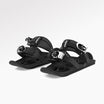
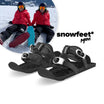

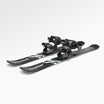



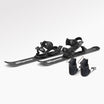






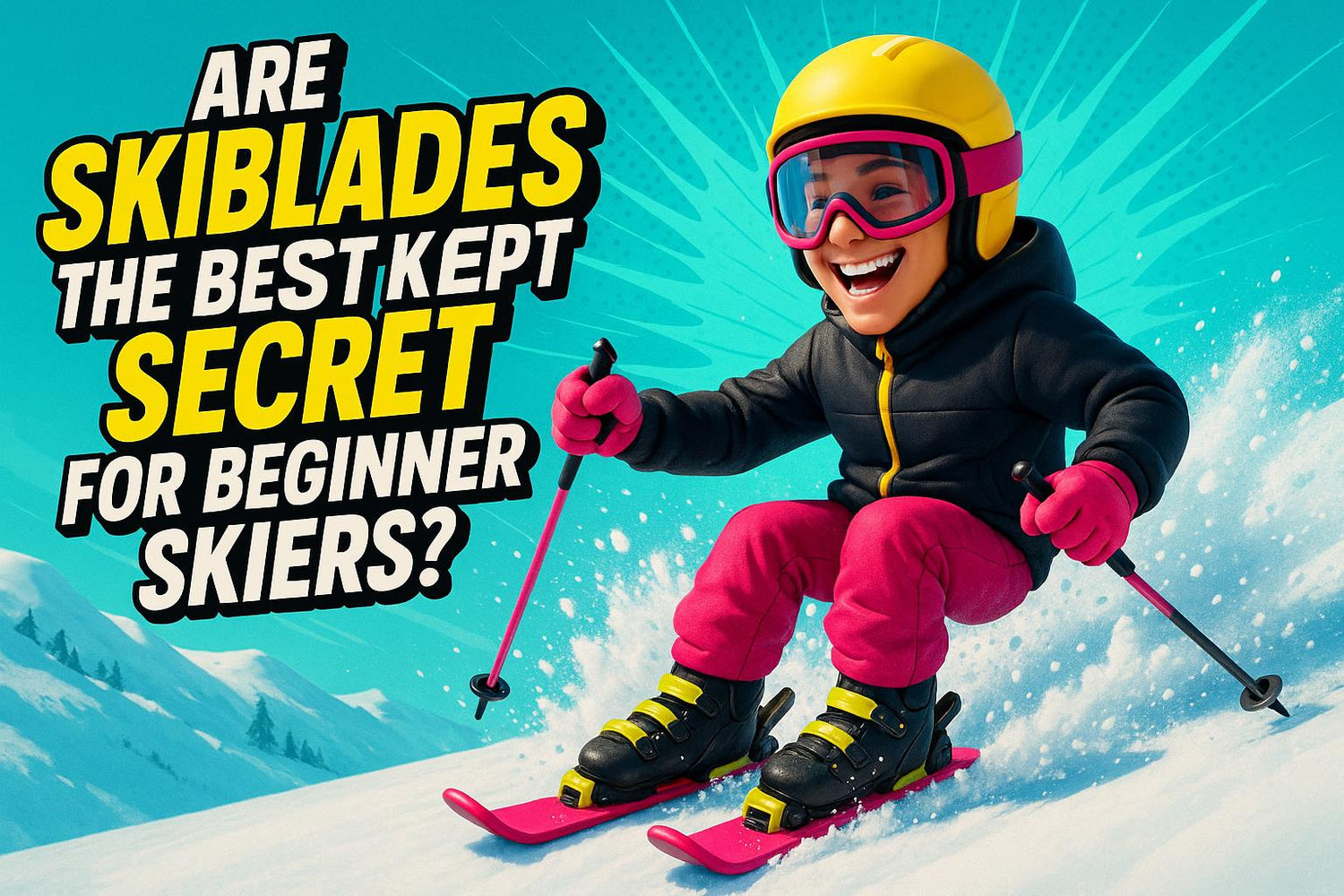
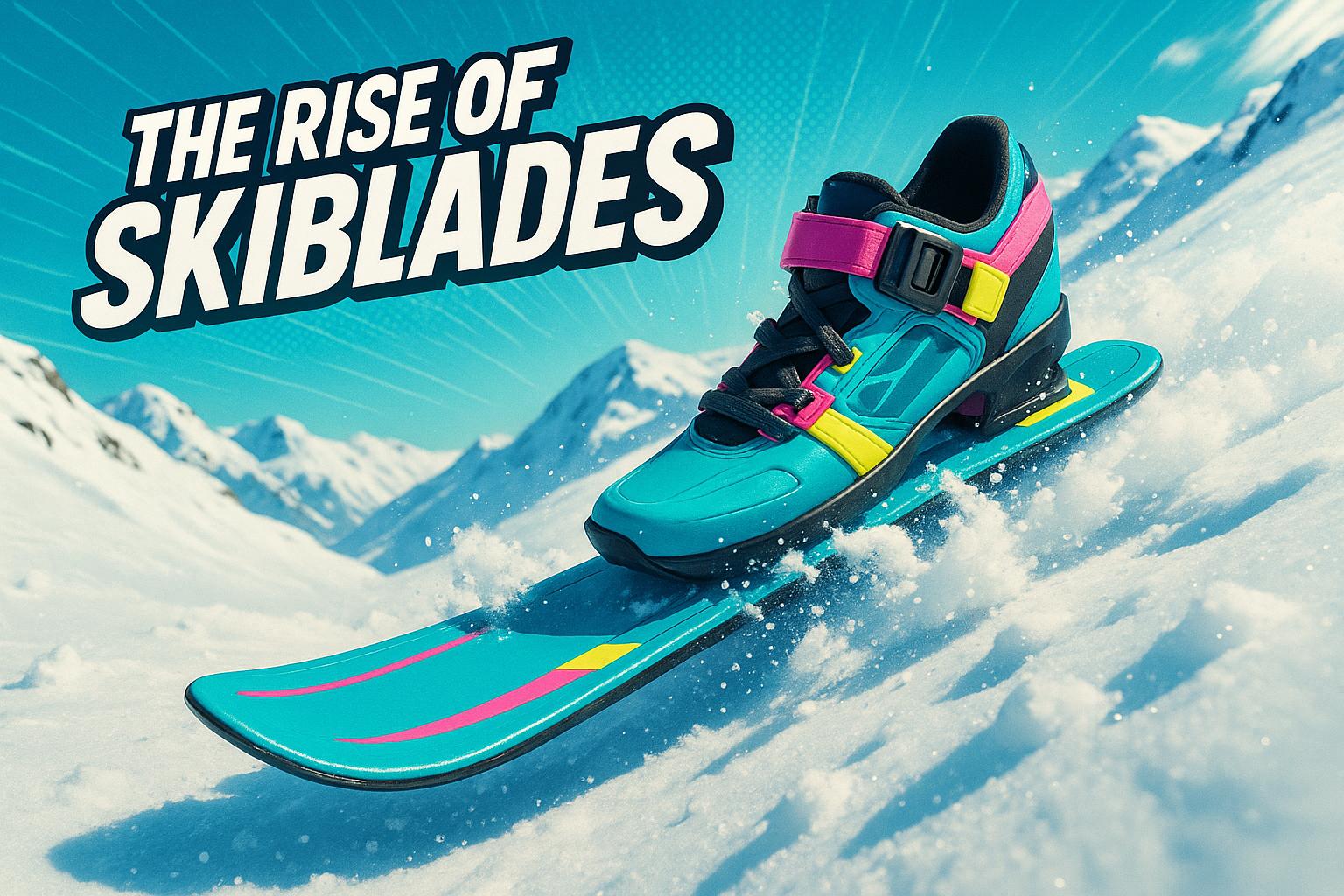
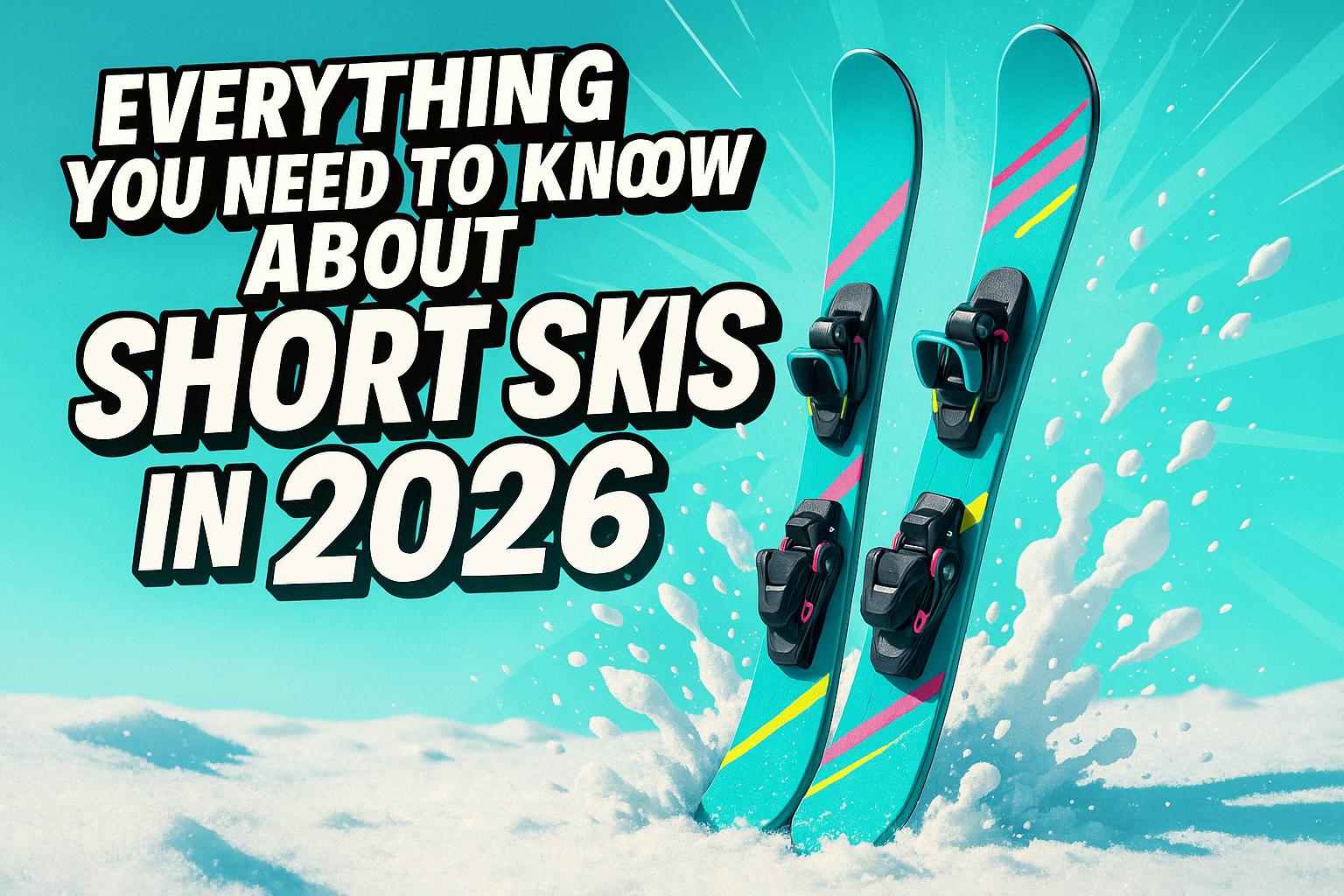




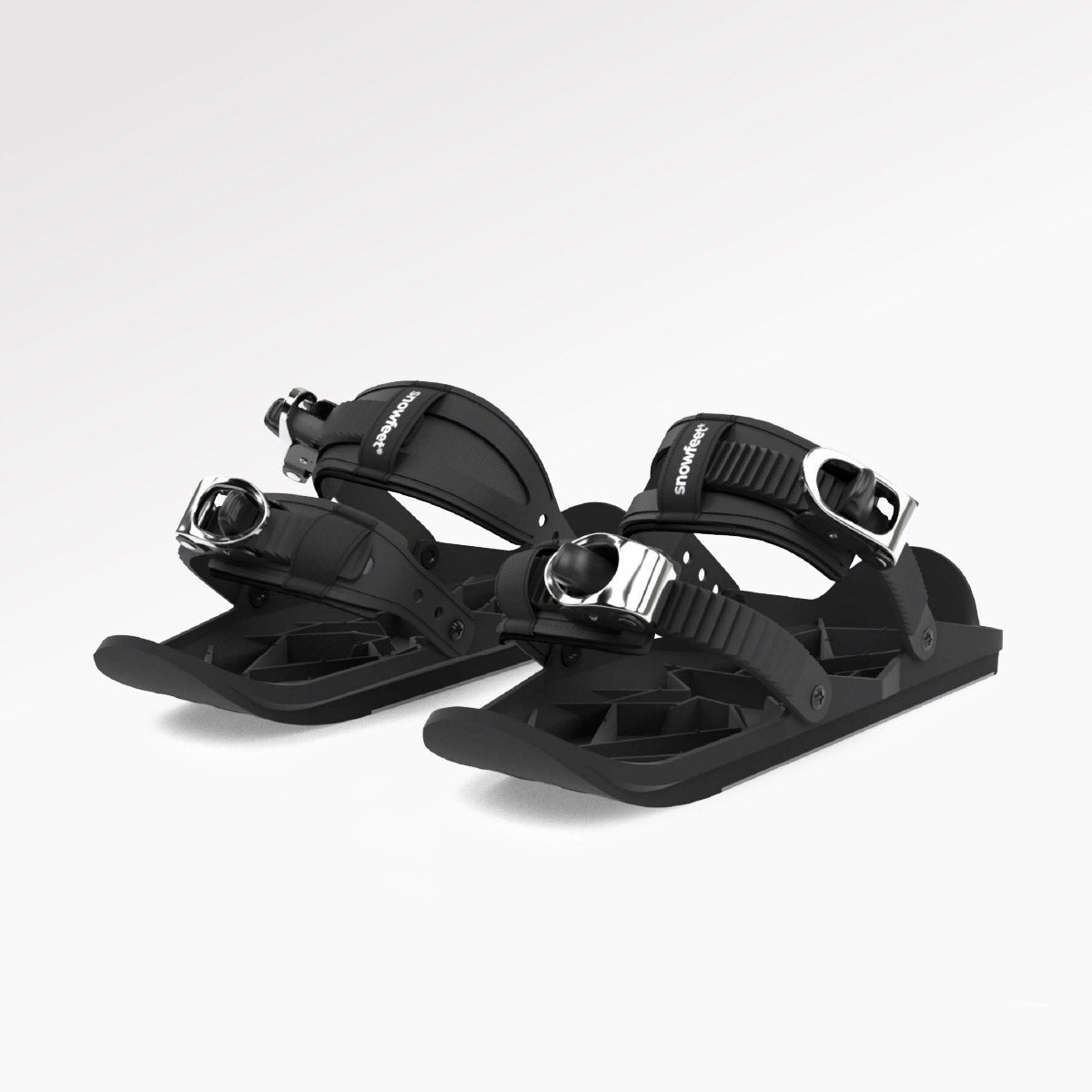
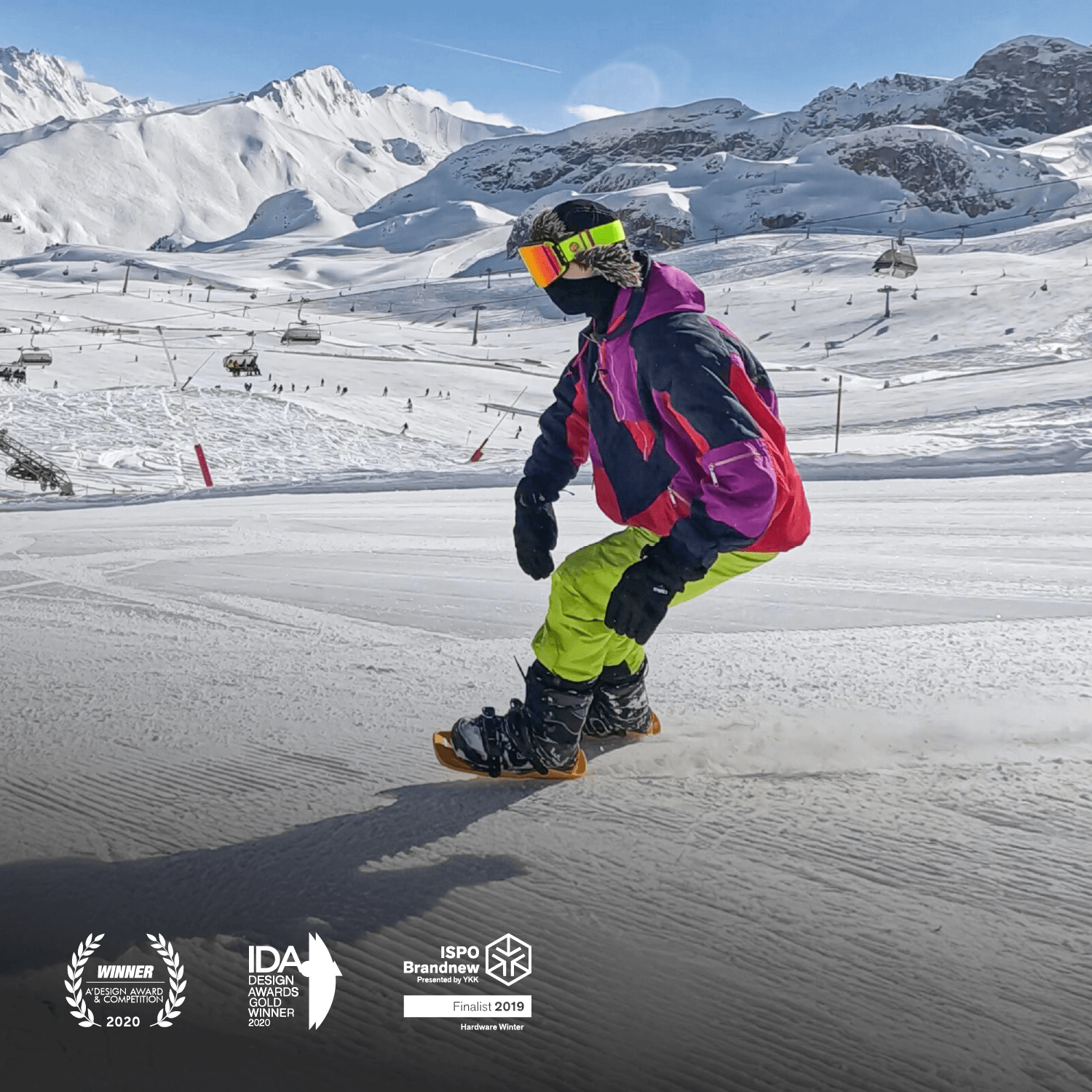


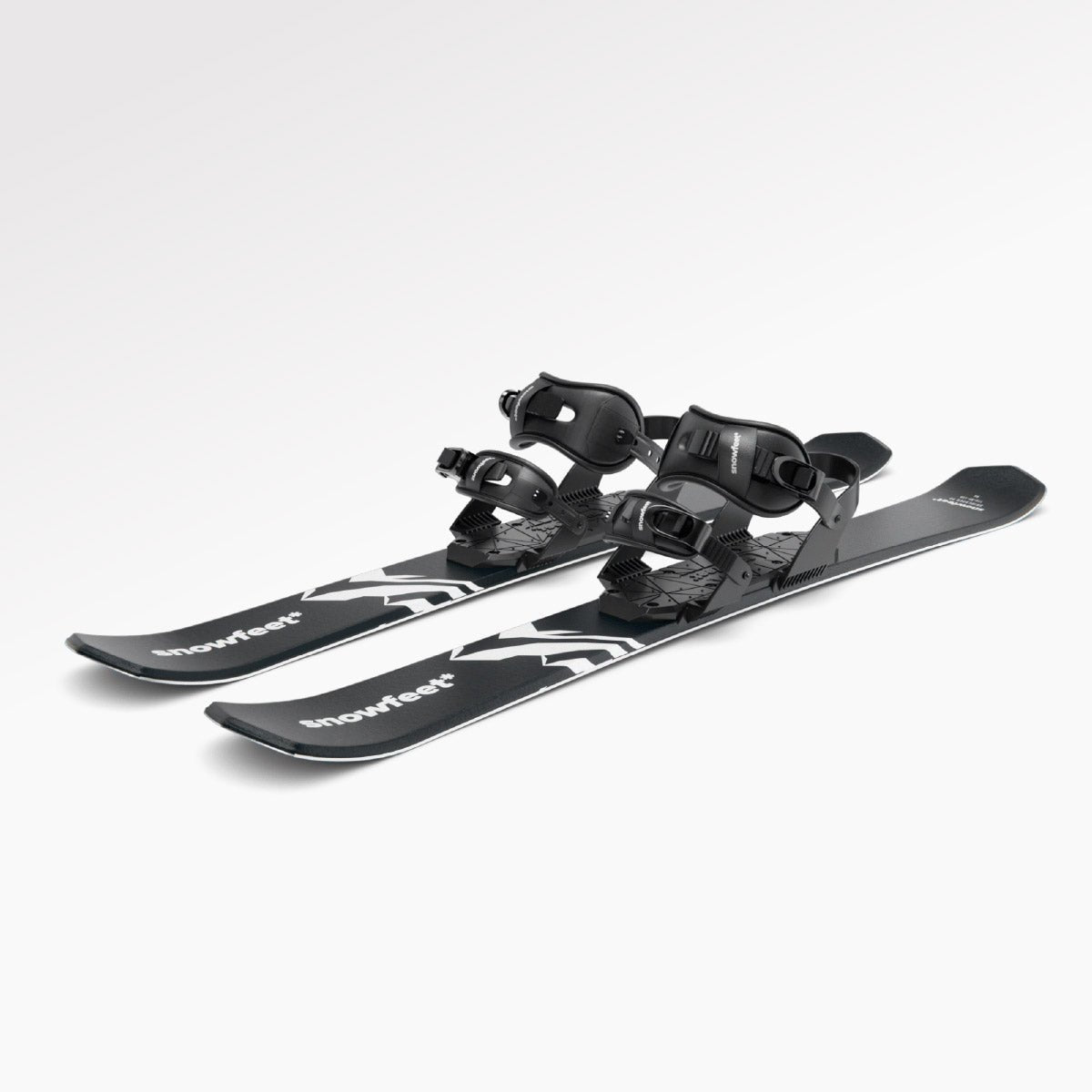

Zostaw komentarz
Ta strona jest chroniona przez hCaptcha i obowiązują na niej Polityka prywatności i Warunki korzystania z usługi serwisu hCaptcha.